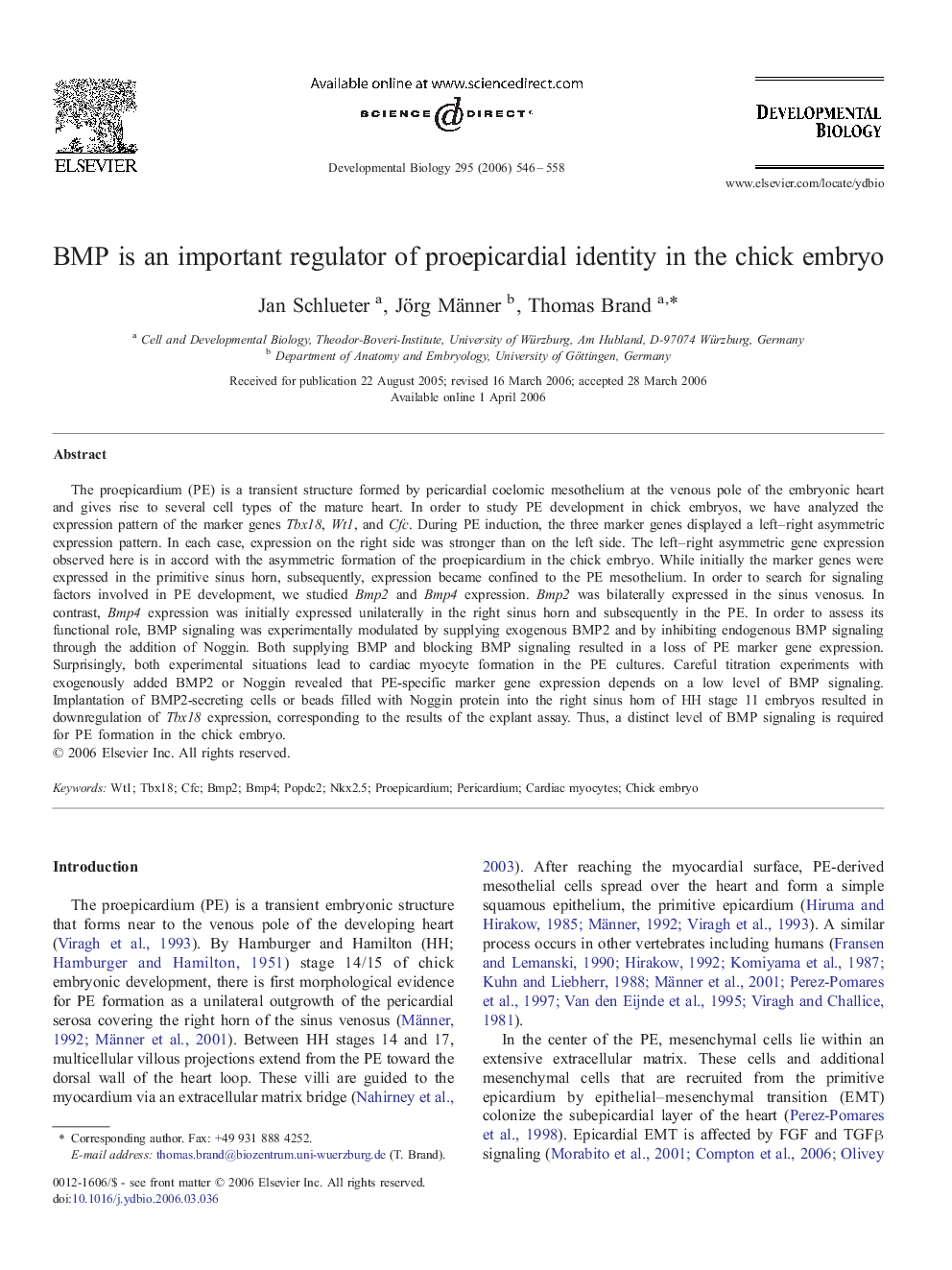| کد مقاله | کد نشریه | سال انتشار | مقاله انگلیسی | نسخه تمام متن |
|---|---|---|---|---|
| 2175986 | 1093858 | 2006 | 13 صفحه PDF | دانلود رایگان |

The proepicardium (PE) is a transient structure formed by pericardial coelomic mesothelium at the venous pole of the embryonic heart and gives rise to several cell types of the mature heart. In order to study PE development in chick embryos, we have analyzed the expression pattern of the marker genes Tbx18, Wt1, and Cfc. During PE induction, the three marker genes displayed a left–right asymmetric expression pattern. In each case, expression on the right side was stronger than on the left side. The left–right asymmetric gene expression observed here is in accord with the asymmetric formation of the proepicardium in the chick embryo. While initially the marker genes were expressed in the primitive sinus horn, subsequently, expression became confined to the PE mesothelium. In order to search for signaling factors involved in PE development, we studied Bmp2 and Bmp4 expression. Bmp2 was bilaterally expressed in the sinus venosus. In contrast, Bmp4 expression was initially expressed unilaterally in the right sinus horn and subsequently in the PE. In order to assess its functional role, BMP signaling was experimentally modulated by supplying exogenous BMP2 and by inhibiting endogenous BMP signaling through the addition of Noggin. Both supplying BMP and blocking BMP signaling resulted in a loss of PE marker gene expression. Surprisingly, both experimental situations lead to cardiac myocyte formation in the PE cultures. Careful titration experiments with exogenously added BMP2 or Noggin revealed that PE-specific marker gene expression depends on a low level of BMP signaling. Implantation of BMP2-secreting cells or beads filled with Noggin protein into the right sinus horn of HH stage 11 embryos resulted in downregulation of Tbx18 expression, corresponding to the results of the explant assay. Thus, a distinct level of BMP signaling is required for PE formation in the chick embryo.
Journal: Developmental Biology - Volume 295, Issue 2, 15 July 2006, Pages 546–558